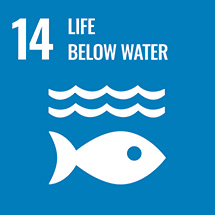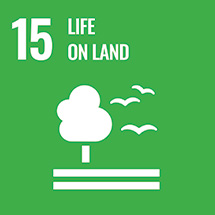Nature's Wonderland
The permanent exhibition "Nature's Wonderland" continues the spirit of "Numbers and Forms", the previous exhibition (1988-2022), to approach "Nature through Science". Through the exploration of various amazing natural phenomena and extensive scientific research, this exhibition helps us to experience this beautiful world where everything is connected and interdependent, to understand the scientific principles that underlie it, and to reflect on the relationships between nature, science and life and their significance.
As human beings, we are fortunate to encounter wonderful nature in our daily lives, but we also have to face various seemingly insoluble problems. As a part of nature, human beings have infinite potential, just like the vibrant and colorful life in the exhibition hall. The "Fantastic Nature" exhibition area hopes to inspire every visitor to use rational analysis and perceptual wisdom to overcome the difficulties of reality, while admiring nature and understanding science, to gather courage with hope, to absorb the power of the world, and together with all life forms to face all crises and challenges for the sustainability of the Earth.
Our encounter with science begins with our admiration for nature. Let's start with nature and learn about Taiwan from a global perspective through story after story about the NMNS collections and say hello to science.
Eggs are where life begins and the embryo develops. Despite their deceptively simple appearance, these wonders hide a rich evolutionary history spanning 400 million years. To adapt to diverse and challenging environments, vertebrate and invertebrate eggs have evolved remarkably complex designs, such as varied and symmetrical shapes, vibrant colors, structural intricacies, and patterns of egg arrangement. Behind all these appearances lie a host of scientific principles in mathematics, physics, chemistry, and biology. Let's discover the secrets of the egg world together!
How do organisms such as fungi, plants, and animals adapt to land and water and develop different creative ways of moving to transfer spores and seeds, jump, and swim? Let's feel the movement and experience this dynamic world with the scientists.
The giant baleen whales feed on small fish and shrimp, while the various toothed whales, which make a variety of sounds and swim quickly and flexibly, hunt small fish, chase medium and large fish, or search for cephalopods. Between catching and being caught, there are hidden secrets to their processing power. To reduce the chance of being hunted, many fish and birds gather in groups, judge the relative speed and distance of neighboring individuals during fast movements, and adjust their own speed and direction accurately. The ability of these animals is truly amazing.
In this cozy space, we can reflect on our relationship with nature by immersing ourselves in the night of fireflies or the wonderful stories of science and scientists exploring and discovering nature. At certain times, scientists will come here to meet you in person, or science educators will take us on interesting science education activities.





